The Highest Standards In Caster Making: Medical Casters
Hospitals and other clinical environments are highly sensitive spaces where one cannot afford to cut corners in the equipment. This includes the casters, which are the wheels attached to medical equipment, including the beds, the chairs, carts and trolleys, and other movable items in the setting.
There are a number of specialized casters available that are only used in clinical environments. These casters have a number of features added to them, which further allow for ease of use in clinical settings. Of course, since the environment that medical casters are used in is so specific and requires many details to be included, medical casters are highly specialized.
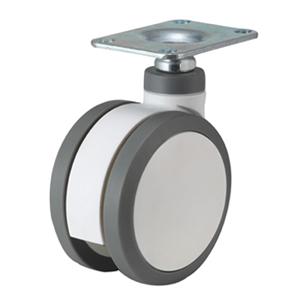
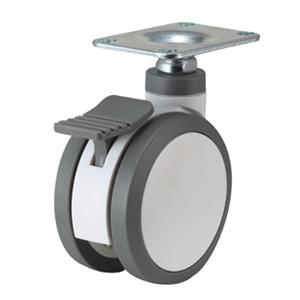
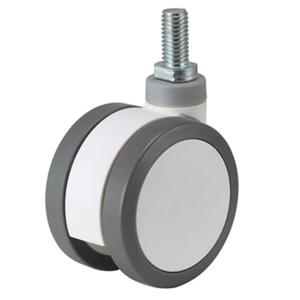
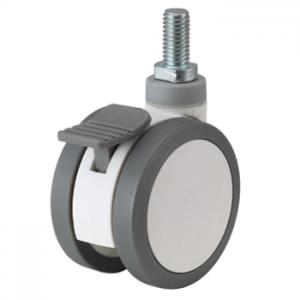
The Unique Features Of Medical Casters
The main reason why medical casters are so specialized is that hospital environments tend to value patient comfort above everything. Medical casters include hospital bed wheels, casters on a wheelchair, and even stretchers. All of this equipment has to bear the load of a patient, and the patient, therefore, needs to feel at ease when they are using this equipment.
So casters that involve the use of twin wheels are often used since they are able to handle heavier loads along with providing stability, preventing the mechanism from toppling over. Even more so, medical casters used in this machinery also offer some degree of shock absorption so that the patient does not feel the impact of small bumps in the flooring, which do not just provide discomfort but also be detrimental to the patient’s health.
Hospital equipment also needs to be functional for a long time without needing frequent replacement or repairs. This is another reason why it is important to choose the right kind of casters which will not buckle under the pressure of the patient’s load or the load from other equipment loaded atop the trolley. The wheels should be made of material that lasts for a long time, needs minimal maintenance, and can traverse on all types of flooring.
Medical casters are often made of stainless steel or high-grade nylon, both of which can be customized depending on the needs of the equipment. These casters are often coated with a bactericidal, sterile coating which aims to prevent cross-contamination from one hospital room to the other.
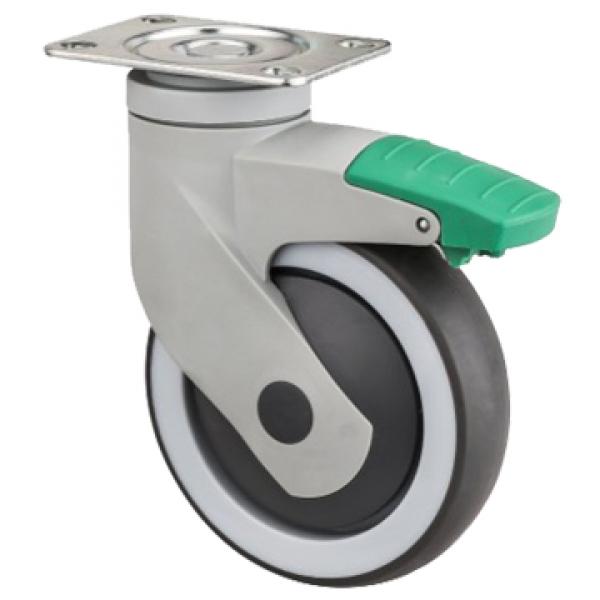
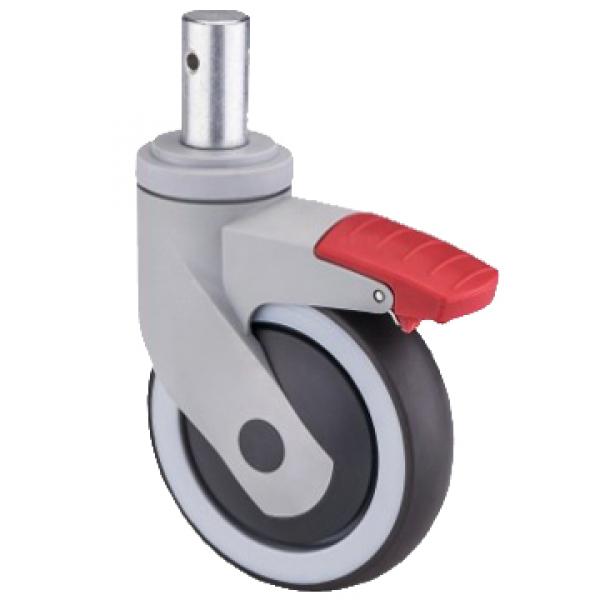
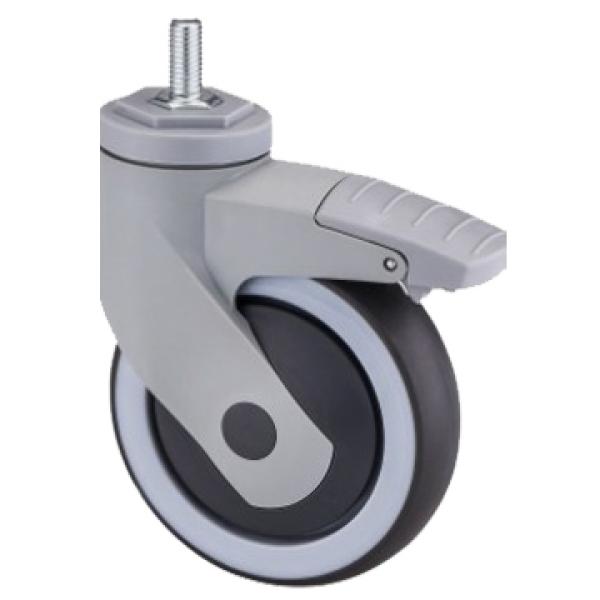
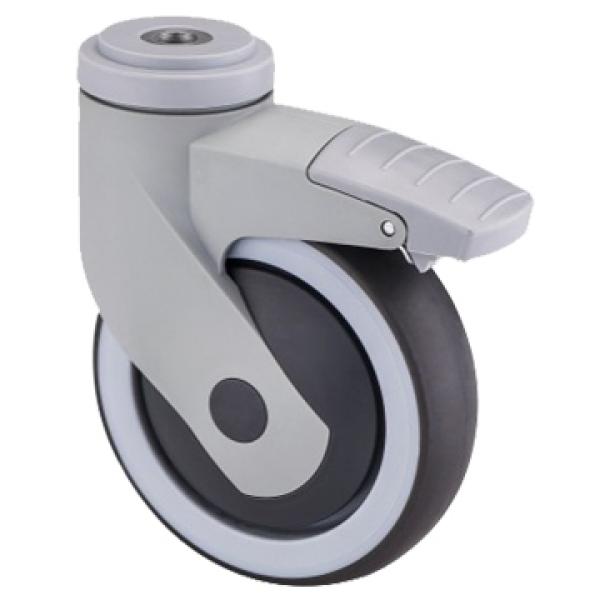
Medical casters are also used on equipment such as IV poles; IV poles are essential to many patients that need the IV for constant medication. The pole needs to be able to move smoothly and with minimal effort, so the patient does not feel any discomfort in terms of snagging or pulling if the pole is being rolled on slightly raised edges or less smooth parts of the floor. Of course, this goes for all other equipment and material that is attached to the patient and requires smooth movement. Not only will specialized medical casters help the patient feel more comfortable, but they will also provide the hospital assistants with an easier time in terms of movement as well.
We also need to consider the general environment of the hospital as well, where doctors focus hard on their patient’s concerns, performing delicate procedures, and also the patients who might be going through very tough times. In these situations, a noisy and un-smooth caster will only be a source of nuisance for everyone in the environment.
Therefore, one of the specializations in medical casters also involves being completely noiseless and smooth. Noiseless casters allow the doctors to focus on their work, and they also avoid any unnecessary disturbances to the patients in the same environment.
Another thing we must consider about casters used in a medical environment is that it often requires an operator. This operator is supposed to push carts, hospital beds, wheelchairs, and other hospital equipment. The constant movement of these carts and other equipment could take a massive toll on the operator, especially if the load is heavy and the casters’ condition is less than ideal.
Therefore, it is important for medical casters to be completely smooth, move with the slightest force, and be easy to maintain as well. Essentially, the casters should be ergonomically sound for the operators of the equipment and should prevent any strain from coming to their bodies.
Of course, it is also essential for medical cart casters to be easy to maintain. Even though hospital environments are usually sterile and clean, the casters can pick up dirt and debris when they are rolled around the premises of the environment. This can cause the wheels to snag and pull and also break down easily, especially if the wheels are not cleaned and maintained regularly. Also, since medical environments are very fast-paced, these wheels should also be easy to clean and maintain. Once the scheduled maintenance is over, the wheel should go back to being as smooth as it was when new. Of course, this feature depends on the material of the wheel entirely. Stainless steel and nylon wheels are often easy to clean, which is why they often feature in medical casters.
You must also remember that a single type of medical caster is not used in all the equipment. Different medical equipment has to carry varying loads, and the casters are specialized according to the equipment as well. For example, IV poles need to be smooth and change direction smoothly but are not carrying anything heavy so they can be more light-weight. On the other hand, hospital bed casters need to be more heavy-duty since they have to carry the weight of the bed along with the patient on the bed.
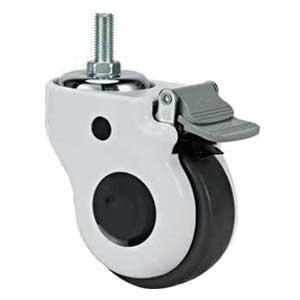
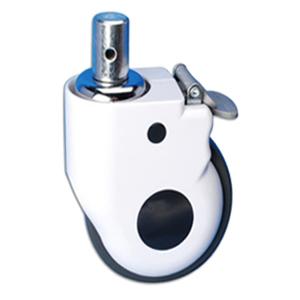
Conclusion
Manufacturers cannot take medical casters lightly because of how specialized and sensitive the equipment in medical environments is. Casters used in medical environments have been highly specialized over many years now to finally be specialized for different uses. Medical casters are also very easy to clean and maintain; being in line with these fast-paced environments where lags in the workflow can quite literally create a life and death situation. There will likely be even more advancements in medical casters in the near future.


 English
English Spanish
Spanish German
German Russian
Russian Arabic
Arabic Portuguese
Portuguese Italian
Italian French
French Hebrew
Hebrew Turkish
Turkish